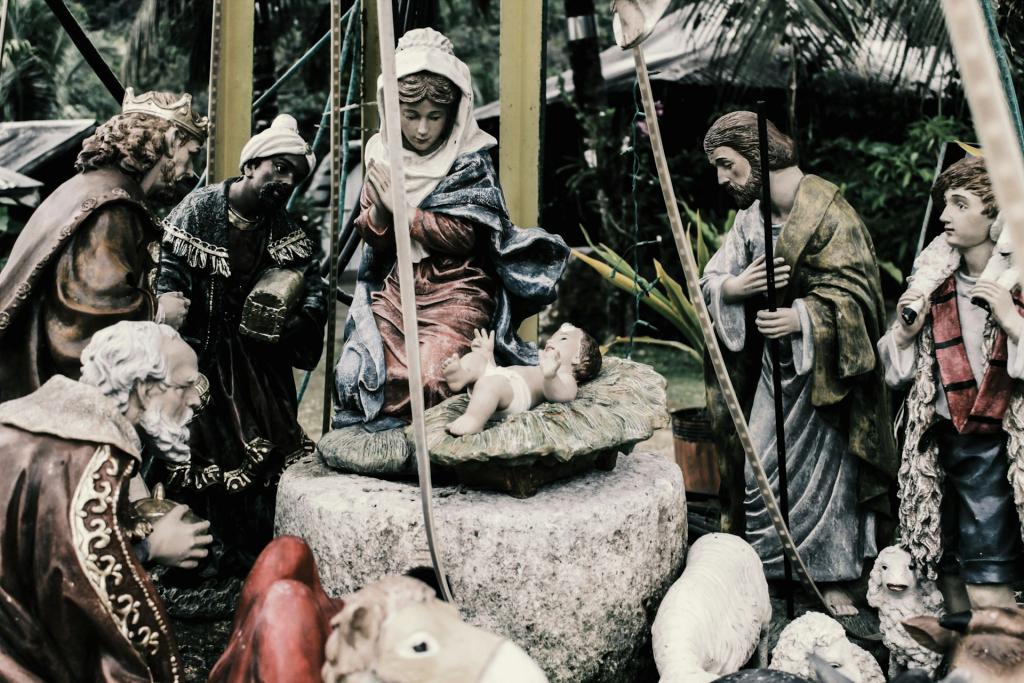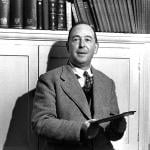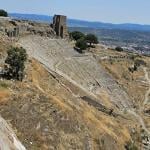
In Mary’s Magnificat, we are drawn into a vision of profound peace, one that upends the world’s power structures and comforts the lowly. Her song proclaims the faithfulness of a God who lifts the humble, fills the hungry, and remembers the forgotten. This prophetic peace is not passive but transformative, offering hope to those who long for justice and a kingdom where mercy reigns.
Advent: Remembering Christ’s Coming
As I pointed out in my last blog post, Advent calls us to remember the coming of Christ – we remember that Christ was promised to come, Jesus did come, and now we hold to the hope that the King will come again. During this season of Advent, we also reflect on how the parousia of Advent promises that the Messianic expectations and promises of hope, peace, joy, and love are being fulfilled here and now as we eagerly await Jesus’ return. Now, we live in the in-between, remembering the hope and promise of Jesus’ first coming and preparing our hearts and lives for Jesus’ return as King, but Advent remind us that eternity is breaking in here and that the Kingdom of God is within reach.
This Advent Season, I have been exploring Mary’s Magnificat, a prophetic song. Mary’s song is not just her personal declaration of joy but a prophetic vision of hope that God is with and for those who are humbled and ignored. It captures her understanding of the scriptures and God’s heart, now that she is part of the story. Mary’s song magnifies what God is doing in the world and, through celebration, helps us to see the hope, peace, joy, and love that the coming of Jesus is bringing into the world. In Luke’s Advent narrative, Mary emerges as our first theologian, offering the earliest glimpse of Spirit-filled living, the initial vision of God’s Spirit poured out on both men and women, and she is the bearer of the first prophetic word. Mary’s story reminds us to trust women as vital voices in faith and revelation.
The Lead a Quiet Life blog on Patheos explores the simplicity and faithfulness of 1 Thessalonians 4:11-12, encouraging a quieter way of following Jesus. Mary’s Magnificat aligns with this pursuit, it is a prophetic challenge calling us to reject excess and embrace God’s presence and purposes. This week, we will see how it declares that God’s peace is actively pushing back the darkness for those who live faithfully.
Mary’s Magnificat: A Prophetic Vision
In my last blog post, I explored how Mary’s song is a prophetic declaration of God’s faithfulness and transformative work. We reflected on how Mary’s song reveals the hope she experiences, as she comes to know God’s heart. That God has come to Mary, even in her lowly state and he is with her. This informs Mary’s song, her understanding of the scriptures, and her trust in God’s Character.
This week I have been reflecting on the promise of peace in Mary’s Prophetic Song. Pay attention as you read the story again this week in Luke 1:39-56. Take note on how Mary’s song celebrates the God who scatters the proud and brings peace to the oppressed, offering a vision of God’s justice that is busy overturning systems of power and pride here and now, reflecting what is yet to come. Jesus’ coming fulfills God’s promise of peace throughout the “First (Old) Testament” —peace is not just the absence of conflict, but a profound, transformative peace that restores and uplifts the marginalized. Through Mary’s prophetic song, we are invited to consider how God’s peace is shaping, has shaped, and can shape our lives and how we can participate in bringing this peace to our communities.
The Peace Declared in Mary’s Song
The Advent season invites us to yearn for a peace that is far more profound than the serene quiet or peace that is often associated with a candlelit Christmas morning. While the holiday season evokes images of calm and comfort, Mary’s song communicates that the peace of God is bold and transformative, breaking into the world with justice and power. It is a peace that confronts oppression, topples the proud, and lifts up the humble — God’s peace a disruptive force that reorders the world according to God’s Kingdom. This peace challenges our sentimental notions and comforts, calling us to embrace the work of reconciliation and justice. In Advent, we don’t merely anticipate the birth of a baby; we await the arrival of a Savior’s Kingdom—a subversive, inbreaking peace that shakes the foundations of injustice and brings hope to the downtrodden.
This imagery of a bold and transformative peace does not come from a masculine source or a seasoned warrior but from Mary, a woman of humble standing by societal standards. Luke writes the account of the Advent story in a way that urges us to apply Mary’s example and understanding to our own lives.
I cannot help but to notice that Mary celebrates that the coming of Jesus fulfills the promise of God’s power to scatter the proud, bringing peace to the held back, held down, and otherwise oppressed. This promise of peace that Advent brings, is especially for those who are marginalized or struggling under oppressive systems.
The aspect of Mary’s song that I want to wrestle with this blog post is is captured in Luke 1:50-52:
“His mercy extends to those who fear him, from generation to generation. He has performed mighty deeds with his arm; he has scattered those who are proud in their inmost thoughts. He has brought down rulers from their thrones but has lifted up the humble” (Luke 1:50-52, NIV). Mary suddenly grasps that the coming of Jesus is the arrival of true authority in the world. Those who think they are in charge—those who lord their power over others, enslave, and oppress—are not truly in control. The coming of Jesus reveals a radical truth: God’s power is with the downtrodden.
Mary’s prophetic song announces that the humble and oppressed will have access to God’s Spirit, the raw and transformative power of God. Mary understands that through Jesus—the one who is not only her son but also God’s Son—the anointed messenger who will triumph over life and death, we too are given the authority to stand firm against the powers that claim dominion over us. In this light, the grip of those who believe themselves powerful begins to loosen their hold on and over us.
God’s Mercy: Wave After Wave
I love how Eugene Peterson captures Mary’s intent in The Message translation: “His mercy flows in wave after wave on those who are in awe before him. He bared his arm and showed his strength, scattered the bluffing braggarts. He knocked tyrants off their high horses, pulled victims out of the mud.” This reflection beautifully modernizes Mary’s message, emphasizing God’s compassion for the humble and His decisive action against the proud and oppressive.
Mary’s song tells us that God’s mercy is being poured out from generation to generation, or wave after wave. Each generation experiences a wave of God’s mercy. So after we worry about the next generation, or we say that this generation doesn’t know God like we did. God is in the business of extending mercy to every generation. Through Jesus, we know what that Mercy looks like. Mary’s song tells us that all we have to do to experience God’s mercy is fear him. As Proverbs 9:10 tells us, fear of the Lord is the beginning of wisdom. Mary, in her right living which could be called fearful living, now knows what it means to have God’s mercy extended to a new generation because she is a recipient of it. The word Luke uses in Mary’s Song for “fear” is phŏbĕō. In Mary’s song, the Greek word phŏbĕō, from which we get the word phobia, conveys not a paralyzing fear but an exceeding reverence and awe toward God, recognizing God’s power and total control with deep respect and worship. We experience God’s presence through an exceeding reverence and awe toward God – when we have a focus and phobia about it.
The Arm of God: Vindication and Salvation
In verse 50, Mary echoes Psalm 103:17, which highlights God’s unwavering faithfulness to those who revere God, despite our human frailty. Psalm 103:17 reads, “But from everlasting to everlasting the Lord’s love is with those who fear him, and his righteousness with their children’s children.” Mary realizes that is coming true here and now and forever more. God’s mercy is his love. In verse 51, she employs the language of vindication through judgment, which is a common Old Testament theme where God’s “arm” brings salvation to His people and “scatters” their enemies. God’s arm is a frequent imagery and symbol used for God’s might in action. Mary blends the imagery found in various psalms to express this divine intervention. All of which informs her understanding now. God is coming not just for the people of God but for those who love God, and the strongman will lose his power over us in the process. It describes the future work of God’s Son with the certainty of a past event. Mary viewed what God would accomplish through her son as already accomplished. This is not as much as an argument for Dodd’s “Realized Eschatology,” as much as a realization of what God’s authority means here-and-now. Realized eschatology is the belief that the promises and kingdom of God are being fully fulfilled in the present through the life, ministry, and resurrection of Jesus. However, a more nuanced understanding, as offered by George Eldon Ladd, embraces a “both-and” perspective, recognizing the Kingdom as both inbreaking now and still coming in its fullness. Mary reflects this “both-and” language in her understanding.
God’s Prophesized Transformative Peace: Beyond Sentimentality
Through Jesus, Mary offers a theological framework that confesses that God is bringing down the proud and those sitting on thrones of power. God is bringing down the “braggarts” and the “tyrants,” and in exchange is “lifting up” and bolstering those in the mud, those who are “humble,” or as the Greek intends those who live in “ignorable places and regions.” From her thankfulness for what God has done for her (46–49a), Mary shifts her focus to God’s broader workings (49b–53), as some scholars point out, reflecting on three key aspects: God’s power, God’s holiness, and God’s mercy. While she sees herself as insignificant, it matters not, God chooses the insignificant, to help others who are insignificant, for ‘the Mighty One’ is at work for the insignificant and among the insignificant. God is warring against the powerful, and peace is coming to those who have long suffered under the powers of this world.
As I said, I want us to notice that Mary celebrates that the coming of Jesus fulfills the promise of God’s power to scatter the proud, bringing peace to the held back, held down, and otherwise oppressed. It has long been promised that God would scatter the proud. This is part of the Christmas message. The prophet Isaiah declared, “The eyes of the arrogant will be humbled and human pride brought low; the LORD alone will be exalted in that day” (Isaiah 2:11). He continued, “The Lord has a day in store for all the proud and lofty,” a promise that a day would come when they would be humbled. Psalm 147 echoes this truth: “The Lord sustains the humble, but casts the wicked to the ground.” This has always been God’s promise and way, and now, in Jesus, we see its fulfillment.
God has also long-promised peace to the oppressed. In Isaiah 9:6-7, the prophet tells us of a son given to us, whose reign will be called the “Prince of Peace,” and His peace will never end. Similarly, the prophet Micah spoke of the coming Messiah, saying that when He comes, people will “beat their swords into plowshares and their spears into pruning hooks” (Micah 4:3-4). This peace is not just personal, but political and global—saying “Nation will not take up sword against nation, nor will they train for war anymore.”
Peace for the marginalized and struggling was also long promised. Isaiah foretold that the servant, Jesus, would have God’s Spirit upon Him and bring justice to the nations. His justice would not come through war or force but through a quiet witness. As Isaiah 42:1-3 says, He will establish justice without raising His voice or shouting. This justice will endure forever. Psalm 72:12-14 further assures that in those days, the needy and afflicted will experience God’s care.
In the New Testament, we see Jesus accomplishing the promises of scattering the proud, bringing peace to the oppressed, and caring for the marginalized in both his actions and teachings. Jesus confronts hypocrisy and elevates the marginalized. He challenges the pride of leaders (Matthew 23), uplifts the humble (Luke 18:9-14), and brings peace as the Prince of Peace (Isaiah 9:6-7). Declaring freedom for the oppressed (Luke 4:18-19), Jesus heals the sick, feeds the hungry, and reconciles people to God and each other (Ephesians 2:14-16). His ministry breaks barriers between classes and cultures, embodying a kingdom where the first are last, and the least are served (Matthew 20:16, 25:31-46).
A Message of Peace
Jesus’ peace and justice for the oppressed was not just a promise for Mary’s time or the days of Jesus’ earthly ministry—it is a lasting reality today. When preparing to leave and return to heaven, Jesus told the disciples, “Peace I leave with you; my peace I give you. I do not give to you as the world gives. Do not let your hearts be troubled and do not be afraid” (John 14:27). The peace Jesus left is not superficial; it loosens the grip of the oppressors, topples the proud and powerful, and brings justice to those who have long lived in the shadows. This peace endures forever until he returns.
First, through Jesus’ work on the cross, God established a lasting peace between Himself and humanity. The oppressive weight of sin was toppled. As Paul writes to the Romans, “Since we have been justified through faith, we have peace with God through our Lord Jesus Christ” (Romans 5:1). This peace is not exclusive or limited; it is for all. Liberation from sin is for all and brings peace.
Second, through Jesus’ work on the cross, God established a lasting peace between peoples. There is no longer an us and them, male or female, gentile and Jew. For example, Paul reminds the Ephesians that Jesus Himself is our peace because he is the one “who has made the two groups one and has destroyed the barrier… thus making peace” (Ephesians 2:14-17). In Jesus, divisions are erased, and we are reconciled to one another and to God.
Third, through Jesus’ work on the cross, God established a lasting peace that extends to all creation, the garden that was affected by humanity’s sins and trespasses. Paul writes to the Colossians that through Jesus, God reconciled “all things” to Himself, not just people, all things, making peace through the cross (Colossians 1:20). All things have been made right with God and can be used for God’s glory to bring about God’s way.
But this peace is not just something Jesus accomplished—it is a way of life for His followers. The peace Jesus brings is also meant to “guard our hearts and minds” (Philippians 4:7), as we are on a mission, but also to equip us to live as peacemakers in the world. Mary gets this in her song, but Peter calls believers to live it out when he says, “seek peace and pursue it” (1 Peter 3:11) in every aspect of life. Similarly, Paul reminds us that we have been given the “ministry of reconciliation” and are called to follow Jesus by taking up our own cross and living out this ministry of reconciliation to others who are humbled and oppressed (2 Corinthians 5:18-19). James underscores this by writing, “Peacemakers who sow in peace reap a harvest of righteousness” (James 3:18). When we make peacemaking our way, a way of bringing down the braggart and tyrant, and lifting up the humble, we experience God’s presence and right way making in this life.
In other words, the lifting up of the humble and the bringing down of the proud are not just acts of God—they are the work we are called to as followers of Jesus. We are invited to join in God’s mission of justice and peace, bringing the peace that lifts up the humble, which is God’s Kingdom, to the places we live, work, worship, and play.
Three Takeaways on the Peace of Mary’s Prophetic Song
In just a few decades, the seemingly unshakable structures of power began to crumble. Rabbinic authority in Israel faced upheaval, the mighty Roman Empire eventually fell, and those who sought to suppress the movement of Jesus’ followers were unable to stop its unstoppable growth. The movement of Christianity reshaped the world. It introduced radical ideas of equality, justice, and compassion, elevating the status of the marginalized, establishing hospitals and schools, and influencing laws that upheld human dignity. Christianity’s impact transcended its beginnings, laying the groundwork for human rights, care for the vulnerable, and a vision of peace rooted in God’s justice that continues to ripple through history. These values are so ingrained in our world today that we often forget how transformative Jesus’ teachings were, but Advent reminds us of a time when power crushed the weak, women had no voice, children were undervalued, and abuse was unchecked—a world forever changed by Jesus coming and has changed how governments govern, people act, and ethics are defined.
I humbly offer three takeaways on how we “live into” and “live out” Mary’s confession that ‘”He has performed mighty deeds with his arm; he has scattered those who are proud in their inmost thoughts. He has brought down rulers from their thrones but has lifted up the humble” (Luke 1:50-52, NIV).
- Advent Reminds Us To Practice Humility: The Advent Story, of God becoming man and teaching us what God looks like, reminds us to practice humility by regularly reflecting on areas of pride in our lives and choosing humility. Seek to listen, learn, and lift others up in your daily interactions, recognizing the image of God in everyone. When we practice humility we remember God is with us in our humble spaces and that he has called us to humble spaces.
- Advent Reminds Us To Stand with the Humble: The Advent Story, of God becoming man and teaching us what God looks like, reminds us to bring God’s peace to others by standing with the humble and marginalized – perhaps by supporting causes or individuals who are often overlooked. Volunteer, donate, or simply extend dignity and kindness to those society undervalues. When we stand with those downtrodden we remind them that God is with them.
- Advent Reminds Us To Be a Peacemaker: The Advent Story, of God becoming man and teaching us what God looks like, reminds us to bring God’s peace to others by working to resolve conflicts with grace and work to reconcile broken relationships. Look for opportunities to promote justice and understanding, even when it requires personal sacrifice. When we mirror reconciliation we testify to God’s goodness and good news.
Closing Thoughts
Mary’s song reminds us that Advent peace is not passive or sentimental. It is active, bold, and restorative, scattering the proud and uplifting the humble. May this season stir us to embrace the disruptive peace of God, both in our hearts and in our world. God’s peace is not passive; it disrupts and overturns systems of pride and oppression. Biblical peace (shalom) is not merely the absence of conflict but it is both the ordinary and supernatural presence of justice, harmony, and restoration for those who are in conflict.
- Where do we harbor pride or participate in systems of power that perpetuate injustice?
- What does it look like to embrace God’s peace in our relationships and daily lives?
- What would it mean to identify ways to work toward peace in our communities—advocating for the oppressed, standing against systemic pride, and fostering reconciliation?













